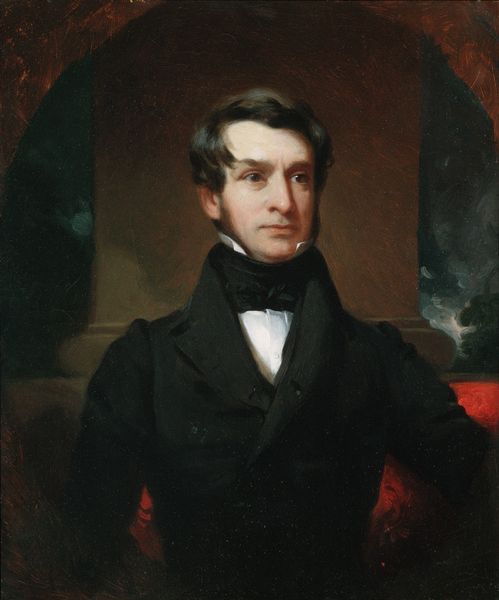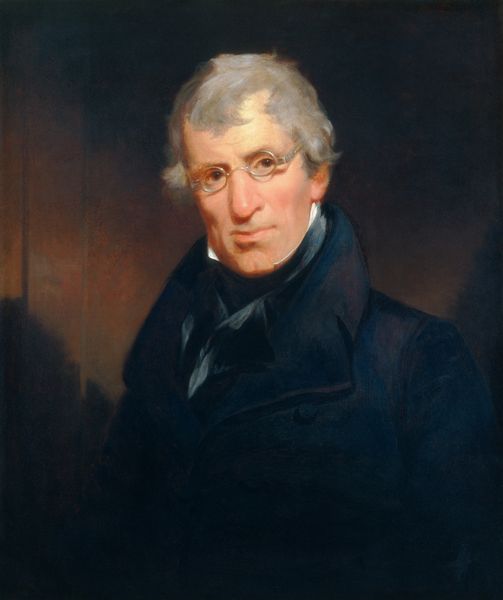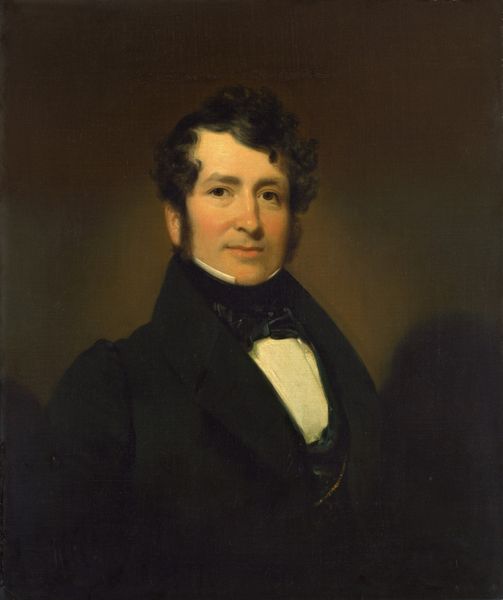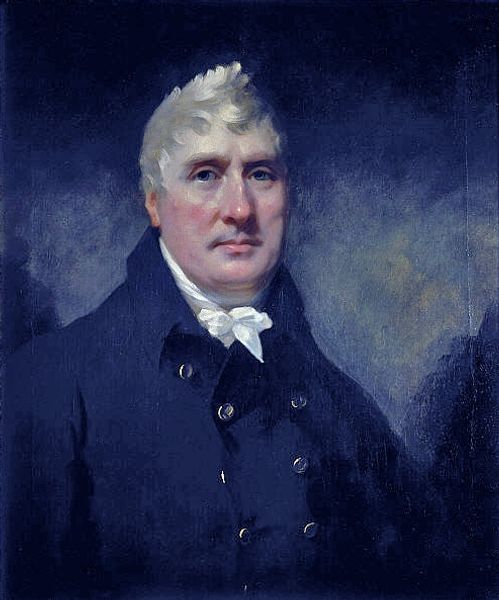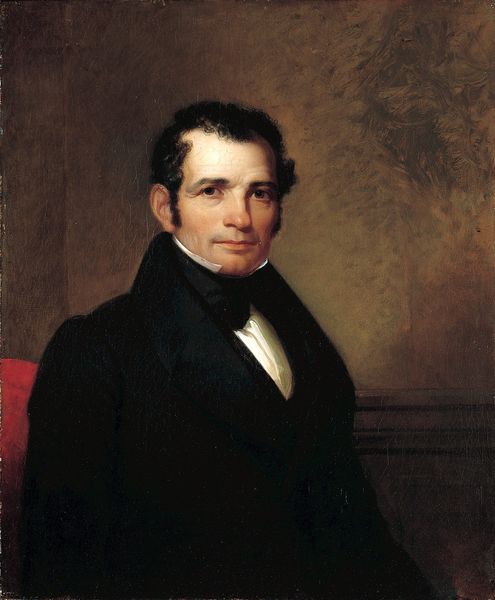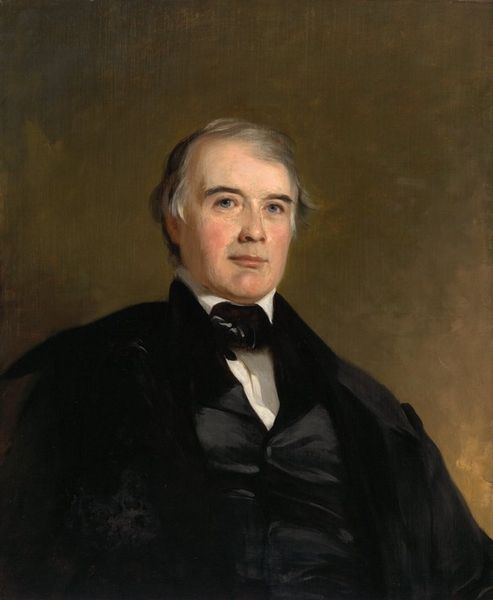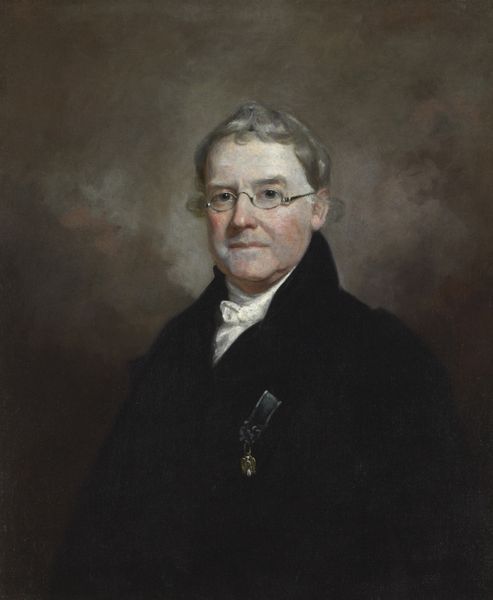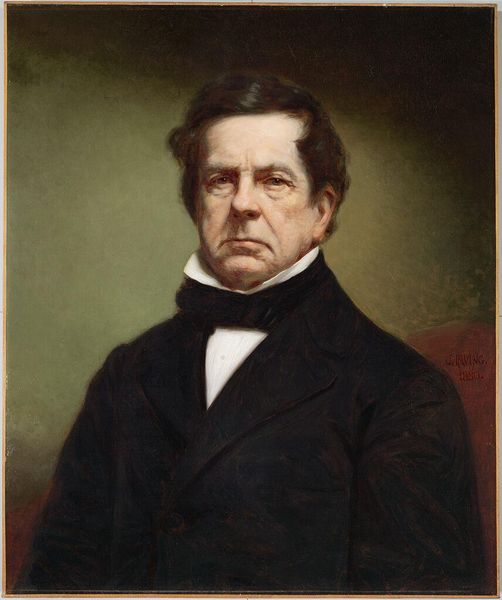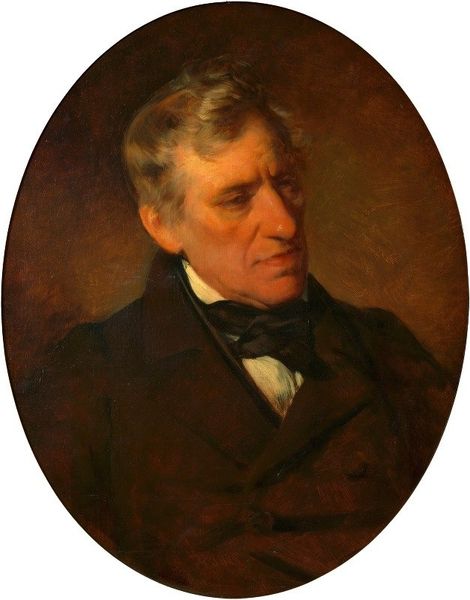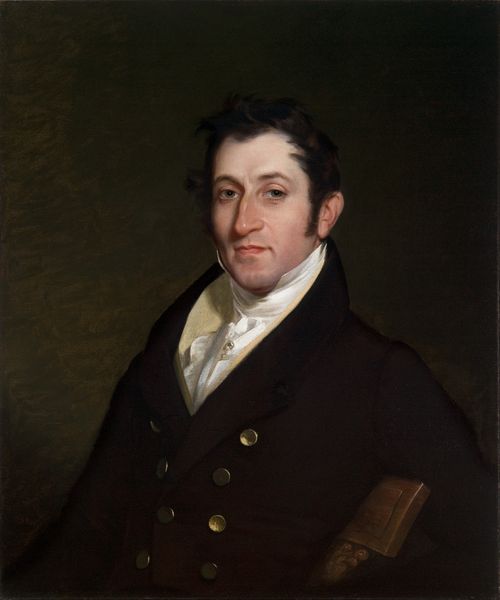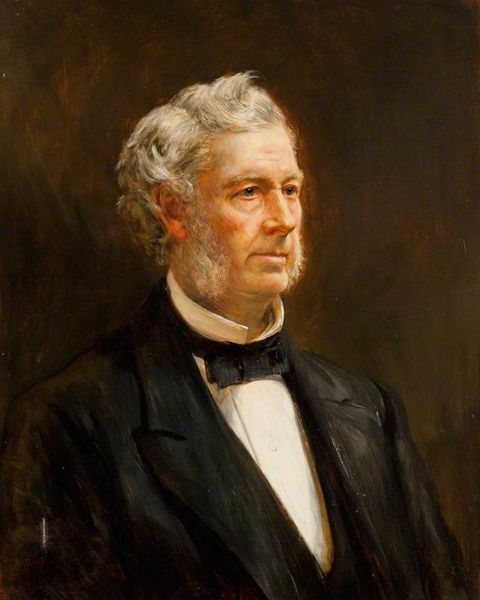
Dimensions: overall: 72 x 58.9 cm (28 3/8 x 23 3/16 in.) framed: 94.6 x 81.9 x 7 cm (37 1/4 x 32 1/4 x 2 3/4 in.)
Copyright: National Gallery of Art: CC0 1.0
Editor: Here we have Daniel Huntington's 1857 oil painting, Dr. John Edwards Holbrook. The portrait is striking in its formality, but there's also something quietly powerful in the subject's gaze. What do you see in this piece? Curator: I see a visual echo of a changing America. The subject's austere presentation, from his dark coat to his unwavering gaze, speaks of established authority, the symbols of a societal structure rooted in 19th-century ideals. Note how Huntington renders the textures. What does the subdued palette evoke for you? Editor: I see respectability, but also maybe a hint of weariness? There's a gravitas in the way Huntington captures the subject's face. Is this representative of portraiture of this era? Curator: Indeed. Portraiture like this served as a powerful tool, reinforcing societal hierarchies. But it is in the subtle details, in the symbols and in the choices made by the artist that narratives beyond simple representation unfold. For example, Dr. Holbrook was a noted zoologist. How might that inform our interpretation? Editor: I hadn't considered that! So, beyond the formal portrait, we also get hints of a life dedicated to science. It's a memory held within the image. Curator: Precisely. Huntington subtly uses symbolism and realism to show us not only the man, but the weight of his position and contributions. It's a fascinating intersection of the individual and the cultural memory. Editor: I'll definitely look at 19th-century portraits differently now. I see so much more than just a face. Curator: As symbols become clearer, new meanings will unfold, enriching the visual and our understanding of this time.
Comments
No comments
Be the first to comment and join the conversation on the ultimate creative platform.

